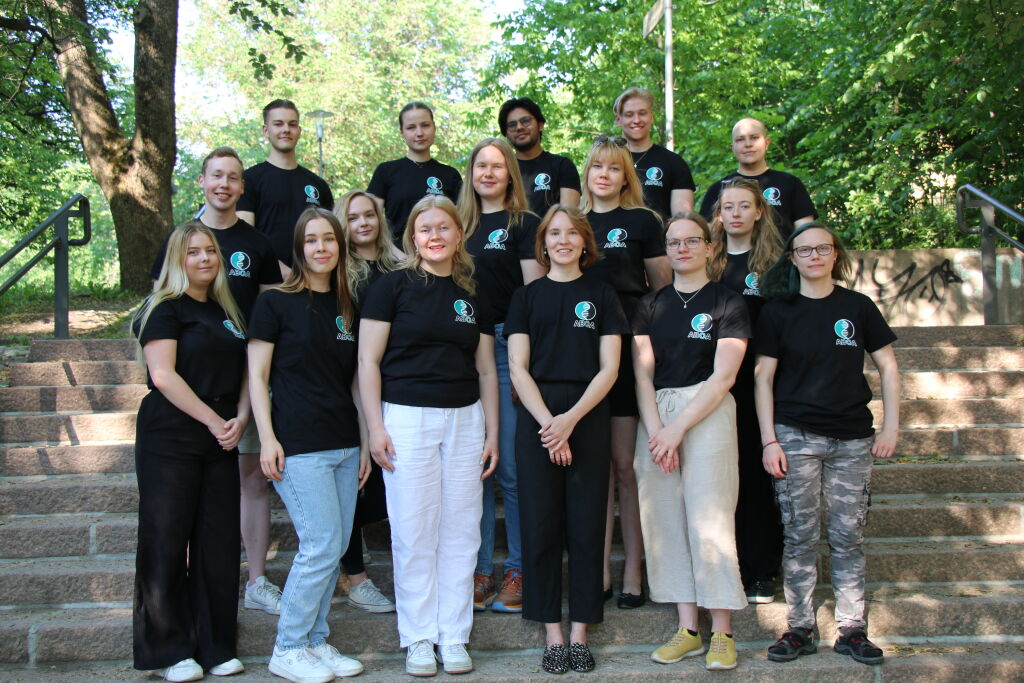Cyanobacteria as a Solution to Mercury-Related Issues – ABOA 2023

The international competition in synthetic biology, iGEM (Genetically Engineered Machine), encourages young minds to come up with solutions to various environmental problems. This year, a team of students from Turku, ABOA, has embarked on developing a solution for removing mercury from the environment using cyanobacteria. Cyanobacteria have the ability to transform substances into organic forms, and this is the main goal of the Turku team – to convert toxic methylmercury into an organic, safer form.
Mercury is present everywhere, as it is found in soil, where it is released into the atmosphere when burning coal. Additionally, mercury is slow to degrade, accumulates in biological systems, and is a toxic substance. Mercury is harmful on its own, but an even more dangerous form of it is methylmercury.
Methylmercury accumulates in the body due to its long half-life. Mercury causes at least neurological, kidney, and digestive system symptoms, genetic changes, heart and vascular diseases, developmental disorders, and even death. The harm is not limited to humans, as wild animals that consume fish, such as loons, eagles, and otters, are also susceptible to the harmful effects of mercury. Developmental disorders are of particular concern for animals exposed to mercury.
Most of the methylmercury Europeans are exposed to comes from fish. This is because methylmercury accumulates in the food chain. The variation in doses is significant, but it is estimated that adults receive about 10-30% of the acceptable daily intake of methylmercury.
However, it is important to remember that even though predatory fish are the main source of methylmercury, and methylmercury exposure should not be too high, there are health benefits to eating fish, and their consumption should not be reduced too much due to methylmercury. The problem can be solved by reducing mercury in water bodies and using a variety of fish species. We propose using cyanobacteria as a solution to reduce mercury from the environment.
Commonly known as blue-green algae, cyanobacteria do not have a very good reputation in many contexts, often being associated with spoiling summer beach days. However, they have many other important roles.
Cyanobacteria are one of the most important producers, unlike most other bacteria, which are decomposers. As producers, cyanobacteria photosynthesize, producing essential oxygen for many organisms and sequestering carbon dioxide from the atmosphere. Thanks to cyanobacteria, the Earth’s once oxygen-poor atmosphere became oxygen-rich, making it possible for diverse life forms to exist. Today, they are responsible for about 20-30% of the entire ecosystem’s oxygen production.
In nature, like many other elements, nitrogen is in constant circulation. Fixing nitrogen from the atmosphere is a challenging, energy-demanding task, but cyanobacteria are capable of it. They convert atmospheric nitrogen (N2) into organic forms, promoting biological processes in aquatic ecosystems where nitrogen deficiency can be a limiting factor. In other words, they transform nitrogen into a usable form. This could be the key to cleaning harmful mercury from the environment.
Various proteins, for example, for research purposes, can be produced in bacteria. This typically involves inserting a DNA fragment into a plasmid vector and transferring this vector into bacterial cells. After that, when the cells are cultivated, they can be induced to produce the desired protein. For example, Escherichia coli (E. Coli) is a common bacterium used in research. Cyanobacteria, like E. coli, can be modified to produce various proteins. One cyanobacterium commonly used in research is Synechocystis. It is chosen because it is easily modifiable, and its genome is publicly available. By modifying this cyanobacterium, we are also carrying out our project.
A warm thank you to the Chemical Industry Federation of Finland for supporting our project!
ABOA 2023 Team
